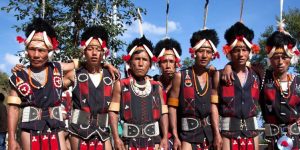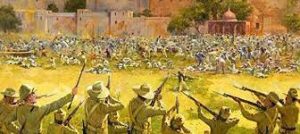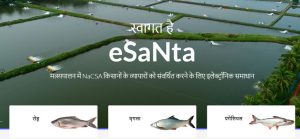Today Current Affairs: 14th April 2021 for UPSC IAS exams, State PSC exams, SSC CGL, State SSC, RRB, Railways, Banking Exam & IBPS, etc
Table of Contents
Register Of Indigenous Inhabitants Of Nagaland (RIIN):

An apex body of Naga tribes has asked the Nagaland government not to be hasty with the exercise to prepare the Register of Indigenous Inhabitants of Nagaland (RIIN), seen as a variant of Assam’s National Register of Citizens.
- The Nagaland government has reportedly been trying to revive the RIIN exercise that was launched in July 2019 with the stated objective of preventing outsiders from obtaining fake indigenous certificates for seeking jobs and benefits of government schemes.
- The State government had formed a three-member panel headed by retired bureaucrat Banuo Z. Jamir for “examining and advising” on the implementation of RIIN.
- The State government had tasked the RIIN committee with determining the eligibility criteria to be an indigenous inhabitant, authority to authenticate claims of being indigenous, place of registration as an indigenous inhabitant, the basis of claims of being indigenous, and the nature of documents that will be accepted as proof.
- But the exercise was suspended following protests from community-based and extremist organizations.
- If the RIIN is implemented with December 1, 1963 – the day Nagaland attained statehood – as the cut-off date, then this date is likely to exclude Nagas who have come from beyond the boundaries of Nagaland.
- According to the Naga Hoho, Naga tribes living in Assam, Manipur, and Arunachal Pradesh in India and in Myanmar have a legitimate claim to their ancestral homeland.
Indian Rhino Vision 2020 (IRV 2020):

The ambitious Indian Rhino Vision 2020 (IRV 2020) came to a close with the release of two rhinos an adult male and a female in Assam’s Manas National Park transported from Pobitora Wildlife Sanctuary about 185 km east.
- Designed in 2005, the IRV2020 is believed to have achieved its target of attaining a population of 3,000 rhinos in Assam.
- But the plan to spread the Rhinoceros unicornis across four protected areas beyond Kaziranga National Park, Orang National Park, and Pobitora could not materialize.
- Assam had at least five rhino-bearing areas till the 1980s.
- Better conservation efforts helped maintain the population of the one-horned herbivore in Kaziranga, Orang, and Pobitora, but encroachment and poaching wiped the animal out of Manas and Laokhowa Wildlife Sanctuary.
- The lesser-known Laokhowa slipped under the radar of international watchdogs.
- Manas, in focus for the near-extinction of the pygmy hog, lost the World Heritage Site tag it received in 1985 along with Kaziranga from the UNESCO.
- The translocated rhinos helped Manas National Park get back its World Heritage Site status in 2011.
102 Years Of The Jallianwala Bagh Tragedy:

The Prime Minister of India commemorated 102 years of the Jallianwala Bagh tragedy that took the lives of hundreds of innocent Indians.
- Recently, on the occasion of 130th Foundation Day of the National Archives of India, an exhibition “Jallianwala Bagh” was inaugurated, to mark the Jallianwala Bagh massacre centenary.
About:
- The Jallianwala Bagh massacre took place on 13th April 1919 in Amritsar, Punjab.
- The tragedy, also known as the Massacre of Amritsar exposed the inhuman approach of the British when the British troops under General Reginald Edward Dyer opened fire into an unarmed crowd.
- The massacre of April 1919 wasn’t an isolated incident, rather an incident that happened with a multitude of factors working in the background.
- During World War I (1914–18) the British government of India enacted a series of repressive emergency powers that were intended to combat subversive activities.
- The Anarchical and Revolutionary Crimes Act of 1919 popularly known as the Rowlatt Act (Black Act) which was passed on 10th March 1919, authorized the government to imprison or confine, without a trial, any person associated with seditious activities which led to nationwide unrest.
- On 13th April 1919, a crowd of at least 10,000 men, women, and children gathered in Jallianwala Bagh to request the release of Dr. Saifuddin Kitchlew and Dr. Satyapal.
- The two prominent leaders who were a symbol of Hindu-Muslim unity, organised a peaceful protest against the Rowlatt act. They were arrested and taken out of the city.
- Brigadier-General Dyer on hearing about the meeting deployed his troops and ordered them to open fire. The only exit to the park was sealed and indiscriminate firing took place killing hundreds of innocent civilians.
National Mission On Sustaining Himalayan Ecosystem (NMSHE):

Scientists, with support from the National Mission on Sustaining Himalayan Ecosystem (NMSHE) Programme, have been able to disseminate available scientific information to the farmers to enable sustainable and climate-resilient agriculture in the Leh region.
- NMSHE is one of the eight missions under the National Action Plan on Climate Change (NAPCC).
Key Points - It was launched in 2010 but was formally approved by the government in 2014.
- It is a multi-pronged, cross-cutting mission across various sectors.
- It contributes to the sustainable development of the country by enhancing the understanding of climate change, its likely impacts, and adaptation actions required for the Himalayas- a region on which a significant proportion of India’s population depends for sustenance.
States Covered:
- Eleven states: Himachal Pradesh, Uttarakhand, Sikkim, Arunachal Pradesh, Nagaland, Manipur, Mizoram, Tripura, Meghalaya, Assam, and West Bengal.
- Two Union Territories: Jammu and Kashmir and Ladakh.
Monsoon Forecast In India:

Skymet Weather, a private weather forecast company, said that the monsoon in India was likely to be 103% of the long period average (LPA) this year.
- The LPA refers to the average all-India monsoon rainfall of 88 cm, which is a 50-year mean.
- The agency classified the forecast as “healthy normal”.
- The monsoon in 2019 and 2020 was only the third time in a century of back-to-back years of above-normal rainfall (rainfall that is 5% above normal, or 105%) during the season in India.
- This year’s forecast by Skymet falls a little short of the “above normal” mark.
- The odds of an El Nino, characterized by a heating of the equatorial central Pacific over half a degree, are low this year.
- An El Nino is historically associated, in many years, with a weakening of the monsoon over India.
- The monsoon is also expected to be fairly well-distributed, with even September (the month in which the season starts to recede) expected to post 10% more rainfall than normal.
- The India Meteorological Department (IMD), which provides the official forecasts, is expected to announce its forecast later this month.
- Along with the El Nino, another ocean variable, the Indian Ocean Dipole, characterized by a temperature gradient in the western and eastern Indian Ocean, is expected to be slightly negative. A positive dipole usually aids the monsoon.
Draft Cycling Policy:Chandigarh:

Chandigarh’s recently released first-of-its-kind draft cycling policy.
- It is for the first time that a city has drafted a cycling policy in India. The policy has been drafted by the Chandigarh Smart City Limited.
Highlights of the Draft:
- Safe refuge points equipped with panic buttons for women cyclists.
- Parking space with roof outside offices.
- Half-a-day earned leave for every seven days cycled to work.
- The monetary incentive for a particular distance traveled.
- Increase in non-motorized transport lanes to reduce fear of accidents.
- Each government office/private body of all types must have a separate policy to encourage commuting to work by cycle.
- To enhance safety, safe refuge points for women and persons with disabilities should be created by introducing 24X7 CCTV surveillance and panic buttons.
Halt To The Sale Of Live Wild Mammals In Food Markets:

The World Health Organization, the World Organisation for Animal Health (OIE) and the United Nations Environment Programme (UNEP) have called for a halt to the sale of live wild mammals in food markets to prevent the emergence of new diseases such as COVID-19.
- Because traditional markets play a central role in providing food and livelihoods for large populations, banning the sale of live wild mammals could protect the health of market workers and customers alike.
- Animals, particularly wild animals, are the source of more than 70% of all emerging infectious diseases in humans, many of which are caused by novel viruses. Wild mammals, in particular, pose a risk for the emergence of new diseases.
About the World Organisation for Animal Health (OIE):
- The need to fight animal diseases at the global level led to the creation of the Office International des Epizooties through the international Agreement signed on January 25th, 1924.
- In May 2003 the Office became the World Organisation for Animal Health but kept its historical acronym OIE.
- The OIE is the intergovernmental organization responsible for improving animal health worldwide.
- It is recognized as a reference organization by the World Trade Organization (WTO).
- The organization is placed under the authority and control of a World Assembly of Delegates consisting of Delegates designated by the Governments of all Member Countries.
- The main objective of the OIE is to control epizootic diseases and thus to prevent their spread
New Year Festivals:

The Vice President of India greeted the people on festivals ‘Chaitra Sukladi, Gudi Padwa, Ugadi, Cheti Chand, Vaisakhi, Vishu, Puthandu, and Bohag Bihu’.
- These festivals of the spring season mark the beginning of the traditional new year in India.
Chaitra Sukladi:
- It marks the beginning of the new year of the Vikram Samvat also known as the Vedic [Hindu] calendar.
- Vikram Samvat is based on the day when the emperor Vikramaditya defeated Sakas, invaded Ujjain and called for a new era.
- Under his supervision, astronomers formed a new calendar based on the luni-solar system that is still followed in the northern regions of India.
- It is the first day during the waxing phase (in which the visible side of moon is getting bigger every night) of the moon in the Chaitra (first month of Hindu calendar).
Gudi Padwa and Ugadi:
- These festivals are celebrated by the people in the Deccan region including Karnataka, Andhra Pradesh and Maharashtra.
- The common practice in the celebrations of both the festivals is the festive food that is prepared with a mix of sweet and bitter.
- A famous concoction served is jaggery (sweet) and neem (bitter), called bevu-bella in the South, signifying that life brings both happiness and sorrows.
- Gudi is a doll prepared in Maharashtrian homes.
- A bamboo stick is adorned with green or red brocade to make the gudi. This gudi is placed prominently in the house or outside a window/ door for all to see.
- For Ugadi, doors in homes are adorned with mango leaf decorations called toranalu or Torana in Kannada.
Cheti Chand:
- Sindhis celebrate the new year as Cheti Chand. Chaitra month is called ‘Chet’ in Sindhi.
- The day commemorates the birth anniversary of Uderolal/Jhulelal, the patron saint of Sindhis.
Navreh:
- It is the lunar new year that is celebrated in Kashmir.
- It is the Sanskrit word ‘Nav-Varsha’ from where the word ‘Navreh’ has been derived.
- It falls on the first day of the Chaitra Navratri.
- On this day, Kashmiri pandits look at a bowl of rice which is considered as a symbol of riches and fertility.
Vaishakhi:
- It is also pronounced as Baisakhi, observed by Hindus and Sikhs.
- It marks the beginning of Hindu Solar New year.
- It commemorates the formation of Khalsa panth of warriors under Guru Gobind Singh in 1699.
- Baisakhi was also the day when colonial British empire officials committed the Jallianwala Bagh massacre at a gathering, an event influential to the Indian movement against colonial rule.
Vishu:
- It is a Hindu festival celebrated in the Indian state of Kerala, Tulu Nadu region in Karnataka, Mahé district of Union Territory of Pondicherry, neighboring areas of Tamil Nadu and their diaspora communities.
- The festival marks the first day of Medam, the ninth month in the solar calendar followed in Kerala.
- It therefore always falls in the middle of April in the Gregorian calendar on 14th or 15th April every year.
Puthandu:
- Also known as Puthuvarudam or Tamil New Year, is the first day of the year on the Tamil calendar and traditionally celebrated as a festival.
- The festival date is set with the solar cycle of the lunisolar Hindu calendar, as the first day of the Tamil month Chithirai.
- It, therefore, falls on or about 14th April every year on the Gregorian calendar.
Bohag Bihu:
- Bohag Bihu or Rongali Bihu also called Xaat Bihu (seven Bihus) is a traditional aboriginal ethnic festival celebrated in the state of Assam and other parts of northeastern India by the indigenous ethnic groups of Assam.
- It marks the beginning of the Assamese New Year.
- It usually falls in the 2nd week of April, historically signifying the time of harvest.
e-SANTA:

- It is an electronic marketplace providing a platform to connect aqua farmers and buyers.
- Launched by Union Commerce Ministry.
- It will enable the farmers to get a better price and the exporters to directly purchase quality products from the farmers enhancing traceability, a key factor in international trade.
- The term e-SANTA was coined for the web portal, meaning Electronic Solution for Augmenting NaCSA farmers’ Trade-in Aquaculture.
- e-SANTA will ‘RAISE’ the lives & income of farmers by Reducing Risk, Awareness of Products & Markets, Increase in Income, Shielding Against Wrong Practice and Ease of Processes.
New Active Galaxy Identified:

Astronomers have discovered a new active galaxy identified as the farthest gamma-ray emitting galaxy that has so far been stumbled upon.
- This active galaxy called the Narrow-Line Seyfert 1 (NLS1) galaxy, which is about 31 billion light-years away, opens up avenues to explore more such gamma-ray emitting galaxies that wait to meet us.
- Scientists from ARIES, an autonomous institute of the Department of Science & Technology (DST) studied around 25,000 luminous Active galactic nuclei (AGN) from the Sloan Digital Sky Survey (SDSS), a major optical imaging and spectroscopic survey of astronomical objects in operation for the last 20 years.
- They found a unique object that emits high-energy gamma rays located at a high redshift. They identified it as a gamma-ray emitting NLS1 galaxy, which is a rare entity in space.
- The new gamma-ray emitting NLS1 was formed when the Universe was only about 4.7 billion years old as compared to its current age of about 13.8 billion years.
Infant Toddler And Caregiver-Friendly Neighbourhoods (ITCN) Training And Capacity Building Programme’:

The ‘Infant-Toddler and Caregiver-friendly Neighbourhoods (ITCN) Training and Capacity Building Programme’ was launched virtually today by the National Institute of Urban Affairs (NIUA) in partnership with Bernard van Leer Foundation (BvLF).
- The Programme is designed to help build capacities of city officials and young professionals for developing young children and family-friendly neighbourhoods within cities in India.
- Under the programme, city officials and young professionals are proposed to be skilled through certified training and capacity building modules.
- The training is proposed to be delivered through well-structured training modules, provided online through the National Urban Learning Platform (NULP), the platform developed for knowledge dissemination by MoHUA and NIUA.
- The National Institute of Urban Affairs (NIUA), is a premier Institute of Ministry of Housing and Urban Affairs, Government of India for research and capacity building for the urban sector in India. It was established in 1976.
- The National Urban Learning Platform (NULP) is envisioned as a means of digitally consolidating key skills and knowledge required by urban stakeholders and making these available to all actors on a channel of their choice.




